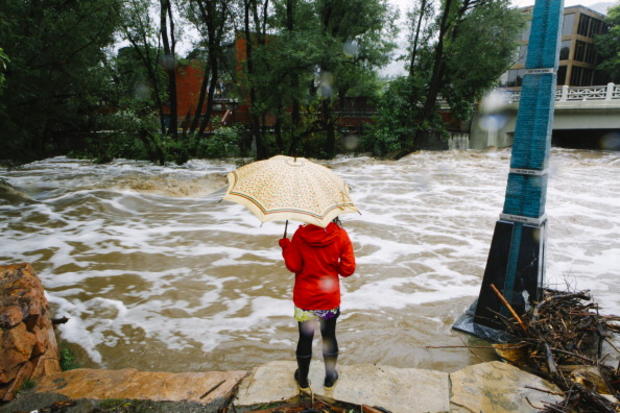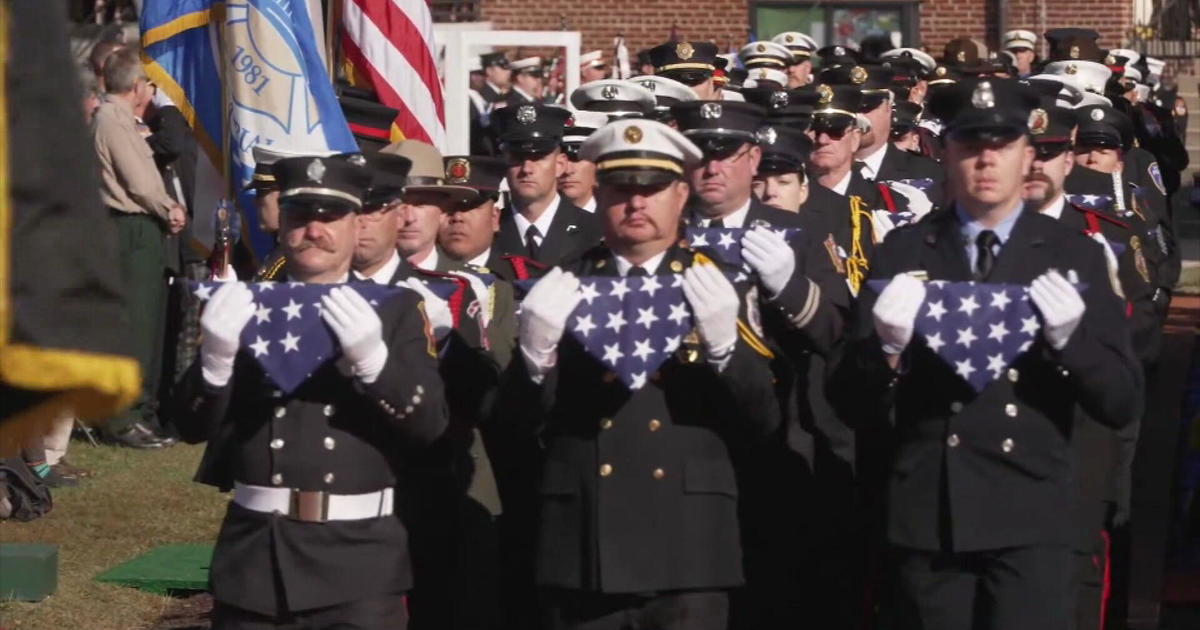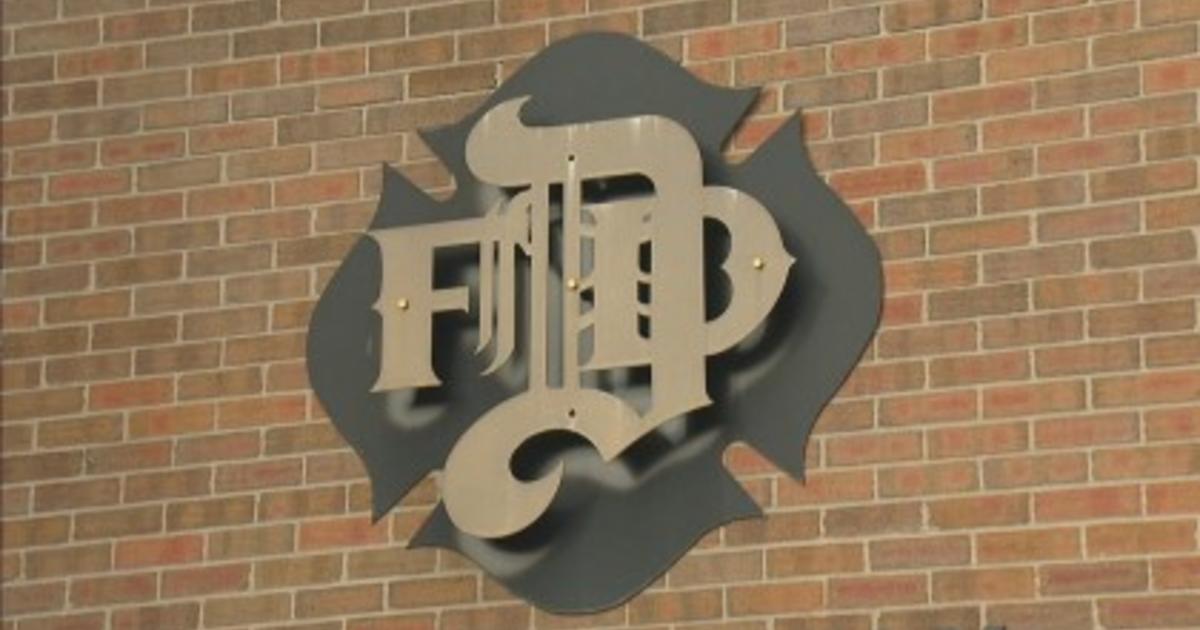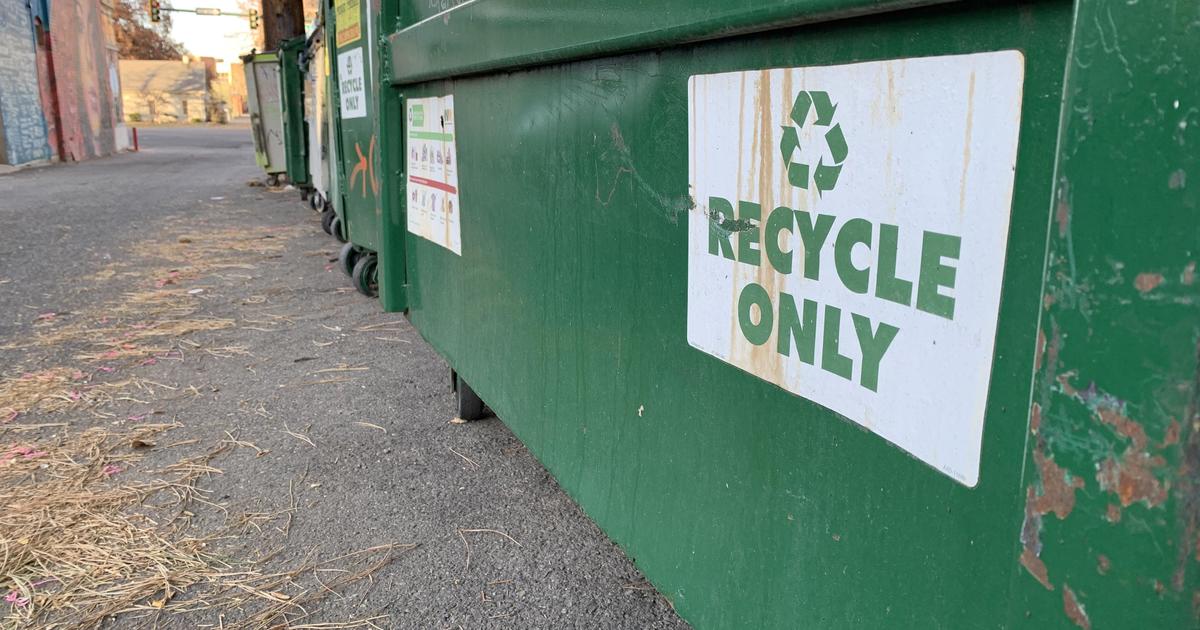Colorado Flash Flood History: More Than 530 Deaths Documented Since 1864
DENVER (CBS4) - When it comes to weather disasters in Colorado we have a large and deadly history, with some of the top and most consistent killers being lightning and avalanches. But rushing floodwaters have claimed hundreds of lives since the mid-1800s when weather records started in the state. We have two flood events on record that claimed over 100 lives.
With so many recent and very large burn scars in our state, we have an enhanced risk to experience flash flooding. On Tuesday alone, we saw problems develop with rushing water, including mud slides, in at least four parts of the state. A flash flood in the Cameron Peak burn scar in Larimer County turned deadly.
Here's a list of the major flood events in Colorado since 1864. Most of them involve either heavy rain from slow-moving thunderstorms or rushing water due to spring runoff after a winter full of heavy snow. The data was mined from Western Water Assessment and it can be accessed by clicking here.
1864 - On May 19, heavy rain on the Plum Creek headwaters caused severe flooding on Plum Creek, Cherry Creek and the South Platte River, killing 19 people.
1884 - During the month of June, extreme snowmelt caused flooding along the Cache la Poudre River and the Colorado River, with an estimated discharge of 210,000 cfs downstream at Lees Ferry, Arizona (the largest flood in the historical record). The floodwaters impacted Grand Junction, Glenwood Springs and Fort Collins.
1894 - Between May 31 and June 2, heavy rain produced severe flooding on Boulder Creek, James Creek, Lefthand Creek and St. Vrain Creek with an estimated flow of 9,000 to 13,000 cfs in Boulder, where over 8 inches of rain was reported. Three lives were lost.
1896 - On July 24, heavy rain from thunderstorms produced flash flooding along Clear Creek and on tributaries of Bear Creek (Tucker Gulch, Mt. Vernon Creek, Turkey Creek) with a peak discharge on Bear Creek of 8,600 cfs. 29 people lost their lives.
1904 - On August 7, there was a flash flood in Dry Creek near Eden that swept away a passenger train crossing trestle with 111 fatalities reported. Additional flooding was documented on Fountain Creek.
1905 - On August 25, a flash flood in Rhode Canyon and Berwind Canyon damaged houses, railroads and mines. The high-water mark was 30 feet above normal flow in Rhode Canyon. 35 lives were lost.
1911 - On October 5, a heavy rain event caused severe flooding in southern Colorado along the Animas River, Rio Grande River, San Miguel River and Huerfano River. The Animas River at Durango experienced an all-time record peak discharge of 25,000 cfs. Three fatalities were reported in the Walsenburg area.
1912 - On July 14, a cloudburst was reported over Sullivan, causing flash flooding along Cherry Creek and surrounding drainages. A wall of water reported to be 30 feet high rolled down Cherry Creek, shattering retaining walls on the creek. Denver, Franktown and Parker were impacted with water up to 3 feet deep in places. Two lives were lost.
1921 - Between June 3-5, over 9 inches of rain fell in the Pueblo area and unleashed a major flash flood along the Arkansas River. A bridge collapse in Pueblo caused many fatalities. 78 deaths were reported. Additional rain events caused flooding and damage along the South Platte River, Coal Creek, Boulder Creek and St. Vrain Creek.
1927 - On June 29, heavy rain in the San Juan Mountains washed out train tracks and bridges in the San Juan Basin and along the Rio Grande River. Three lives were lost.
1933 - On July 7, a flash flood in Mt. Vernon Canyon killed 7 people. The flood crest was reported to be 15 feet high. On August 3, a heavy rain event near Castle Rock led to the failure of the Castlewood Dam, causing severe flooding and destruction along Cherry Creek. The floodwaters traveled 40 miles downstream into downtown Denver. Two lives were lost.
1934 - On August 9, heavy rain created a flash flood near Kittredge and in Mt. Vernon Canyon. Many motorists were caught and six people were killed.
1935 - On May 30-31, multiple heavy rain events caused severe flooding on Monument Creek, Kiowa Creek and the South Platte River with 27 deaths reported.
1938 - Several days of heavy rain in early September caused flooding on South Boulder Creek, Coal Creek, the Big Thompson River, St. Vrain Creek, Bear Creek and the Cache la Poudre River. Rainfall in the Fort Collins area was estimated to be between 8-10 inches. The town of Morrison experienced so much flooding that they debated about relocating the town. The event still holds a flood record for South Boulder Creek. Six lives were lost.
1951 - On August 3, heavy rain caused flooding on the Big Thompson River, Poudre River, Boulder Creek, St. Vrain Creek and the South Platte River. Flood damage was reported in Fort Collins, Loveland, Lyons and Denver. A dam failed on Buckhorn Creek west of Fort Collins. Four people lost their lives.
1955 - Between May 18-20, heavy rain fell in southern Colorado, with anywhere from 6-10 inches reported southwest of Pueblo. Severe flooding was reported on the Purgatoire River, Raton Creek and Arkansas River. The high-water mark on the Purgatoire River was 30 feet above normal. One life was lost.
1956 - Several days of heavy rain in late July and early August produced severe flooding on the South Platte River.
1965 - Heavy rain between June 16-18 caused severe flooding on Plum Creek, Cherry Creek and the South Platte River. The flood zone included two-thirds of Denver's industrial area. Over 14 inches of rain was reported in Castle Rock. The Purgatoire River and lower Arkansas River in southern Colorado also reported heavy flooding with 11 inches of rain in Holly and 15 inches near Lamar in one day. 21 deaths were reported.
1969 - In early May, a multi-day event dropped 6-14 inches of rain over the foothills of Boulder and Jefferson Counties, causing severe flooding on Left Hand Creek, Boulder Creek, South Boulder Creek, Bear Creek and Turkey Creek. Some of the precipitation in the higher elevations fell as snow which prevented the flooding from being even worse than it was. One death was reported.
1970 - On September 6, a heavy rain event associated with former Tropical Storm Norma dropped 4-6 inches of rain around Durango and Pagosa Springs. Widespread flooding was reported in the San Juan Mountains, including along the Animas River.
1973 - Heavy rain fell between May 5-6 and when combined with snow melt, it caused severe flooding along Bear Creek, Turkey Creek, Plum Creek and the South Platte River. It was said to be the worst flooding in Denver since June 1965. The Stapleton Airport recorded 3.27 inches of rain in 24-hours. Two deaths were reported.
1976 - On July 31, a stationary thunderstorm near Estes Park dropped up to 12 inches of rain in 6 hours over the Big Thompson Canyon. Hundreds of homes were destroyed along Highway 34 and many motorists were trapped. The estimated discharge at the mouth of the canyon was 33,000 cfs. 144 lives were lost.
1983 - A deep winter snowpack caused extensive flooding during spring runoff, especially in early June. 10 lives were lost.
1984 - A deep winter snowpack caused extensive flooding around the state during May. Two lives were lost.
1997 - Heavy rain between July 27-29 caused extensive flooding in northeast Colorado. In west Fort Collins over 10 inches of rain fell in 6 hours on the 28th, resulting in a deadly flood along Spring Creek. It heavily damaged Colorado State University and many residential areas. Five lives were lost. On the 29th, heavy flooding was reported along Pawnee Creek near Sterling when 13 inches of rain fell.
1999 - Heavy rain in late April and early May caused severe flooding in Colorado Springs, Manitou Springs, Pueblo and La Junta.
2013 - Heavy rain fell between September 9-16 along Colorado's Front Range with widespread rain totals between 10-18 inches. Severe flooding was reported along many waterways, including the Big Thompson River, St. Vrain Creek, Little Thompson River, Lefthand Creek and Coal Creek. Over 20,000 homes were damaged or destroyed with incredible damage to roads, bridges, water treatment plants and other infrastructure along the Front Range.
(And here is data that is not included in the Western Water Assessment report yet:)
2021 - Destructive debris flows in the Cameron Peak Fire burn scar in Larimer County led to flash flooding in Poudre Canyon on July 20 which killed at least one person and destroyed five homes.




